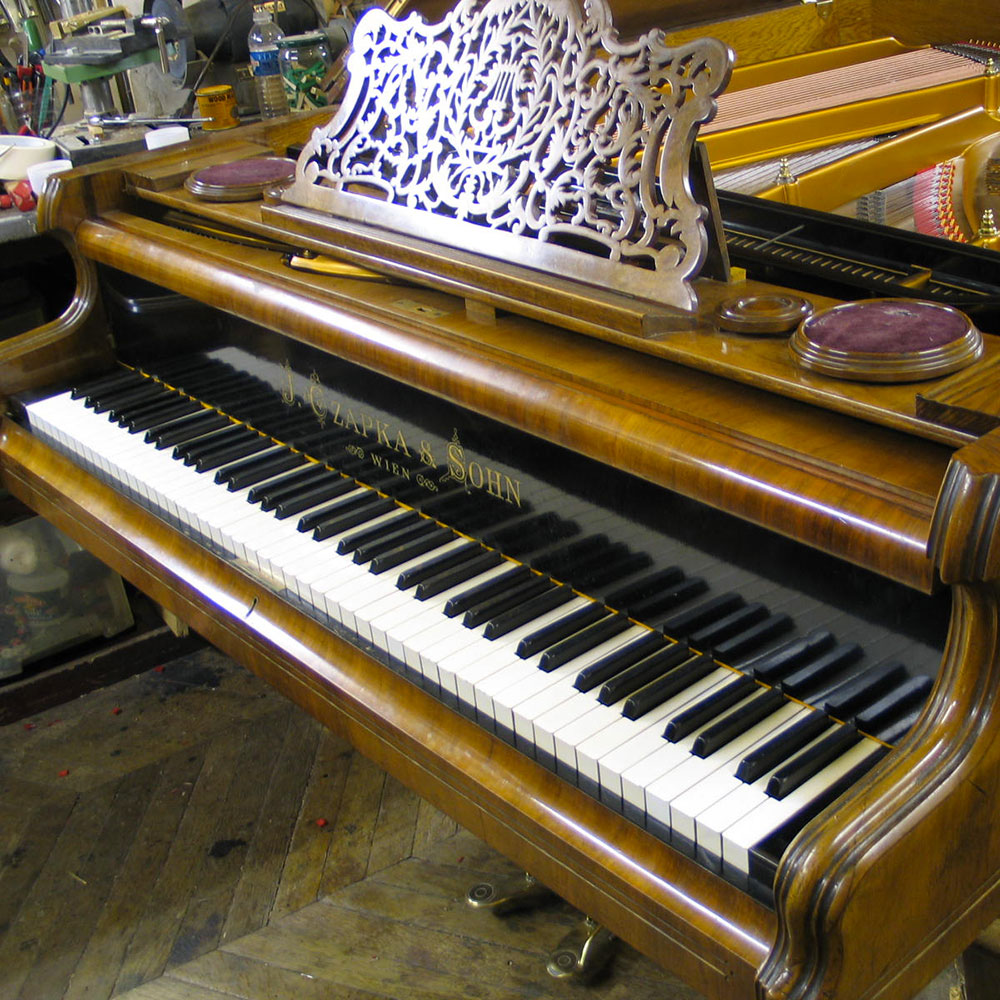What is an antique or vintage piano?
"The terms antique and vintage pianos are broad, and apply to pianos made from 1860 to 1940 and made to so-called modern design: metal frame, straight- or cross-strung, double escapement for grand pianos, modern upright mechanisms with underdampers for later upright pianos. The heyday of the French romantic piano between 1800 and 1900 (Pleyel-Chopin, Erard-Liszt) and the golden age between 1900 and 1940 have given us the terms pre-war pianos and inter-war pianos, which should not be confused with fortepianos: these very old instruments were made between 1720 and the end of the 1800s, and have no metal frame. Between 1860 and 1940 a large number of piano makers worldwide made modern pianos which often both looked and sounded beautiful, many of which have survived to the present day in good condition. Today these pianos represent an important part of our musical heritage. It is important to retain their intrinsic value by preserving them in perfect condition. The musical quality of antique and vintage pianos, their indescribable tone and their charming timbre are all prized today. These qualities have been acquired over time, so new industrially-made pianos simply cannot compete with these venerable instruments. Each antique or vintage piano reveals its power with a certain grandeur, rather than brashly, and each has its own unique personality, calm or tempestuous, broad and deep, clear or coloured, rounded or spiky, Such pianos are living instruments waiting to be awoken. Antique and vintage pianos belong to another world, one without competition or comparison, with no marketing or product range, and so with no stereotypes: each piano speaks for itself. Simply putting your hands on the keyboard is enough to connect you to its heart, whatever kind the piano may be and whatever your own skill.
The world of antique and vintage pianos, whether restored or not, lives on through the dedication of those enthusiasts, music lovers, amateur musicians, individuals and aesthetes who prefer a certain softness for exploring emotions and a vivid and colourful harmonic palette for depicting human feelings, which are as idiosyncratic as the instruments that give them voice...
"




